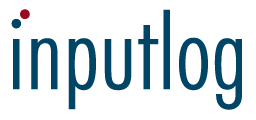Three main areas of research
In recent years, numerous research studies have used keystroke logging software to observe writing processes, targeting a wide variety of research objectives. Studies can be categorized in three main categories.

Theoretical research
- Writing development
Studies that focus on a better understanding of the cognitive processes that characterize writing development from a theoretical perspective. See for instance: Baaijen, Galbraith, and de Glopper (2012, 2014); Lindgren, Leijten, and Van Waes (2011)
- Writing models
Studies that aim at testing or elaborating theoretical models of (cognitive) writing processes. See for instance: Leijten, Van Waes, Schriver and Hayes (2014); Olive (2014); Quinlan, Loncke, Leijten, and Van Waes (2012); Van Waes and Leijten (2015)

Methodological research
- Exploring measurements in observation writing processes with KSL
Several studies have explored KSL data an made research based suggestions about how to use this kind of data to address a wide variety of research questions.
See for instance, Baaijen, Galbraith, and de Glopper (2012); Medimorec and Risko (2017); Van Waes and Leijten (2015); Van Waes, Leijten, Lindgren, and Wengelin (2015); Wengelin (2006)
- Low level writing processes
(typing measures)
How writers juggle with cognitive constraints during writing is partly influenced by the degree of mastering low level processes, e.g. related to typing skills.
See for instance: Chukharev-Hudilainen (2014); Van Waes, Leijten, Mariën, and Engelborghs (2017); Wallot and Grabowski (2013).
- Mixed methods
One of the advantages of keystroke logging is that it is an unobstrusive observatrion method that can easily be combined with other observation methods, e.g. thinking aloud protocols.
See for instance: Kruger (2016); Lardilleux, Fleury, and Cislaru (2013); Leijten, Janssen, and Van Waes (2010); Zapata (2016); Wengelin, Torrance, Holmqvist, & Johansson (2009)

Applied research
- Translation
Studies that aim at contibuting to the further development of translation process models, or specific subprocesses in translation (like post-editing).
See for instance: Carl, M., Schaeffer, M., & Bangalore, S. (2016); Dam-Jensen and Heine (2013); Schrijver, Van Vaerenbergh, Leijten, and Van Waes (2016).
- L1-L2 research
Studies that explore differences in writing processes between L1 and L2 (or foreign languages), mostly in educational settings.
See for instance: Hyland (2016); Van Waes and Leijten (2015); 聂玉景 (2016)
- Cognitive difficulties
Studies that focus on writing processes of persons with writing or learning difficulties (e.g., dyslexia). Also dementia or aphasia patients are being observed with KSL.
See for instance: Antonsson, Johansson, Hartelius, Henriksson, Longoni & Wengelin (2018); Galbraith, Baaijen, Smith-Spark, and Torrance (2012); Leijten et al. (2015); Richards, Abbott, and Berninger (2016); Van Waes et al. (2017)
Reference
If you publish or present a paper in which Inputlog has been used, please refer to the following article:
Leijten, M., & Van Waes, L. (2013). Keystroke Logging in Writing Research: Using Inputlog to Analyze Writing Processes. Written Communication 30(3), 358-392
DOI: 10.1177/0741088313491692
PDF

